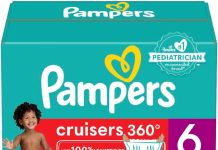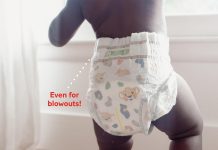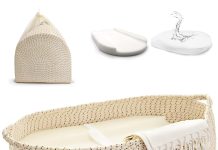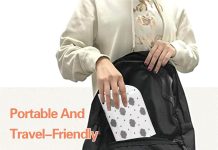When it comes to changing diapers, parents often find themselves faced with the age-old question: are contour changing pads or flat surfaces better? We all want a secure and comfortable spot to take care of our little ones, but which option truly reigns supreme? In this article, we will explore the advantages and disadvantages of both contour changing pads and flat surfaces, helping you make an informed decision that fits the needs of your baby and your lifestyle. Get ready to make changing time a breeze!
Review contents
Pros of Contour Changing Pads
Easily fit to the shape of the baby
One of the major advantages of contour changing pads is their ability to easily conform to the shape of the baby. The contoured design ensures a snug fit and provides a secure and comfortable surface for diaper changes. This not only keeps the baby in place but also helps prevent any unwanted movement or rolling off the pad.
Provide a secure and comfortable surface
Contour changing pads offer a secure and comfortable surface for your little one during diaper changes. The raised edges and contoured shape provide a barrier that keeps the baby from accidentally rolling off the pad. This added security gives parents peace of mind, knowing that their baby is safe and protected.
Prevent the baby from rolling off
One of the primary concerns during diaper changing is the baby’s movement and the risk of rolling off the changing surface. Contour changing pads effectively address this concern by providing a contoured shape that gently hugs the baby’s body. This prevents them from rolling off the pad and ensures a secure and stable environment for diaper changes.
Offer additional support for the baby’s body
Contour changing pads are designed to provide additional support for the baby’s body. The contoured shape follows the natural curves of the baby’s back and provides support where it’s needed most. This added support can help alleviate discomfort and provides a more comfortable experience for the baby during diaper changes.
Cons of Contour Changing Pads
Limited surface area
One drawback of contour changing pads is their limited surface area. The contoured design, while providing a secure fit, may not offer as much space as flat surfaces. This can pose a challenge when changing a wriggling baby or when dealing with messy diaper changes that require extra space.
Require regular cleaning
Due to their shape, contour changing pads require regular cleaning to ensure hygiene. The contours and edges may trap dirt, making it necessary to pay close attention to cleaning and disinfecting. This can be time-consuming and may require more effort compared to cleaning a flat surface.
May be more expensive than flat surfaces
Another consideration when choosing contour changing pads is the cost. These pads are typically more expensive than flat surfaces due to their specialized design and added features. While the benefits they offer may justify the higher price for some parents, it is important to consider if the additional cost fits within your budget.
Not suitable for older babies or toddlers
As babies grow older and become more active, contour changing pads may become less suitable. The contoured design that provides security for newborns and smaller babies may limit movement and hinder the independence of older babies and toddlers. Flat surfaces can be more versatile and accommodating in such situations.
Pros of Flat Surfaces
Versatile and can be used for various purposes
One of the key advantages of flat surfaces is their versatility. Unlike contour changing pads, these surfaces can be used for various purposes beyond diaper changing. They can double as play mats, tummy time areas, or even serve as temporary sleeping surfaces when needed. This versatility makes flat surfaces a practical choice for parents looking for multi-purpose usability.
Easy to clean and maintain
Flat surfaces, such as changing mats or blankets, are generally easier to clean and maintain. With no contoured edges or special features, wiping down a flat surface is a quick and straightforward process. This can save time and effort, especially during those hectic diaper changing moments.
Cost-effective compared to contour changing pads
When it comes to cost, flat surfaces are often a more affordable option. Since they lack the specialized design and features of contour changing pads, they tend to be more budget-friendly. This can be particularly appealing for parents looking for a practical and cost-effective solution for diaper changing.
Suitable for older babies and toddlers
Flat surfaces offer better accommodation for older babies and toddlers who require more space and freedom of movement during diaper changes. As the baby grows and becomes more active, a flat surface provides the flexibility needed for them to explore and gain independence. This can make diaper changing a more pleasant experience for both parents and the baby.
Cons of Flat Surfaces
Less secure and more prone to accidents
One of the drawbacks of using flat surfaces for diaper changing is the lack of built-in security. Without the raised edges and contoured shape, flat surfaces offer less protection against accidental rolling or movement. Parents need to exercise extra caution and ensure constant supervision to prevent any mishaps.
Lack of support for the baby’s body
Unlike contour changing pads, flat surfaces usually do not provide the same level of support for the baby’s body. The absence of contours and specially designed support areas can result in a less comfortable experience for the baby during diaper changes. Parents may need to provide additional support or cushioning to ensure the baby’s comfort.
Can be uncomfortable for the baby
Depending on the material and padding used, some flat surfaces may not offer the same level of comfort as contour changing pads. Babies have delicate skin, and a rough or uncomfortable surface can cause discomfort or irritations during diaper changes. It is important to choose a flat surface that is soft, smooth, and suitable for the baby’s sensitive skin.
May not fit well for newborns or smaller babies
Flat surfaces may not provide the same level of snug fit as contour changing pads, especially for newborns or smaller babies. The lack of contours can result in the baby moving around or slipping during diaper changes, making it more challenging for parents to handle the task efficiently. Additional precautions and attention are needed to ensure the baby’s safety and comfort.
Comfort and Safety
When it comes to comfort and safety, contour changing pads have a clear advantage. The contoured shape and added support allow for a more comfortable experience for the baby during diaper changes. The raised edges and secure fit provide a sense of security and help prevent accidents. Parents can have peace of mind knowing that their little one is comfortable and safe on a contoured changing pad.
On the other hand, flat surfaces may lack the same level of comfort and security. The absence of contours and limited support can pose risks, particularly for more active or wriggling babies. Parents need to be extra vigilant and cautious to ensure the baby’s safety on a flat surface.
Convenience and Portability
In terms of convenience and portability, flat surfaces take the lead. Flat changing mats or blankets are generally more lightweight and easier to carry around. They can be folded or rolled up, making them convenient to take on outings or trips. On the other hand, contour changing pads are bulkier and may be less portable. They are often designed to stay in one place and may not be as travel-friendly as flat surfaces.
Parents who value convenience and portability may find flat surfaces to be a more practical choice, especially when frequently on the go or in need of a changing surface while away from home. However, those who prioritize the comfort and security of their baby may opt for the slightly less portable contour changing pads.
Versatility and Multi-purpose Usage
When it comes to versatility, flat surfaces have the upper hand. These surfaces can be used for various purposes beyond diaper changing, making them a practical choice for parents who want to make the most out of their baby gear. Flat surfaces can serve as play mats, tummy time areas, or even temporary sleeping surfaces when needed. This multi-purpose functionality adds value and makes flat surfaces a versatile option for parents.
In contrast, contour changing pads are specifically designed for diaper changing and may not offer the same versatility. The specialized design and shape make them less suitable for alternative uses. Parents who prioritize multi-purpose usability may find flat surfaces to be a more favorable option.
Suitability for Different Stages
Contour changing pads and flat surfaces have varying degrees of suitability depending on the baby’s age and stage of development. Contour changing pads are ideal for newborns and smaller babies who require the added support and secure fit. The contours and raised edges ensure comfort and safety during diaper changes. However, as the baby grows older and becomes more active, contour changing pads may limit movement and hinder independence. In such cases, flat surfaces are more suitable for older babies and toddlers who require more space and freedom of movement.
Parents need to consider their baby’s current stage of development and choose a changing surface that best caters to their needs. The snug fit and added support of contour changing pads are beneficial for newborns, while the flexibility and space provided by flat surfaces are advantageous for older babies and toddlers.
Cleaning and Maintenance
Cleaning and maintenance are important factors to consider when choosing a changing surface. Contour changing pads require regular cleaning due to their shape. The contours and edges can trap dirt, making it necessary to ensure thorough cleaning and disinfecting to maintain hygiene. While this can be time-consuming, the added effort may be worth it for parents who prioritize the benefits offered by contour changing pads.
Flat surfaces, on the other hand, are generally easier to clean and maintain. With no contours or edges to worry about, wiping down a flat surface is a quick and straightforward process. This convenience makes flat surfaces a practical choice for parents looking for a hassle-free cleaning routine.
Cost Comparison
Cost is an important consideration for many parents when choosing baby products. Contour changing pads are often more expensive than flat surfaces due to their specialized design and added features. The additional cost can be justified by the benefits they offer, such as a secure fit and added support. However, parents on a tight budget may find flat surfaces to be a more cost-effective solution for diaper changing.
Flat surfaces provide a more affordable option without compromising on functionality and convenience. They offer a practical and budget-friendly choice for parents looking for a cost-effective solution without sacrificing the baby’s comfort and safety.
In conclusion, both contour changing pads and flat surfaces have their pros and cons. Contour changing pads excel in providing a secure and comfortable surface with added support for the baby’s body. They are ideal for newborns and smaller babies and offer peace of mind to parents concerned about their baby’s safety. On the other hand, flat surfaces provide versatility, convenience, and cost-effectiveness. They are suitable for older babies and toddlers and offer multi-purpose usability.
Ultimately, the choice between contour changing pads and flat surfaces depends on personal preferences, the baby’s age and development stage, and individual budget constraints. It is important for parents to weigh the advantages and disadvantages of each option and choose the one that best suits their needs and priorities.






























